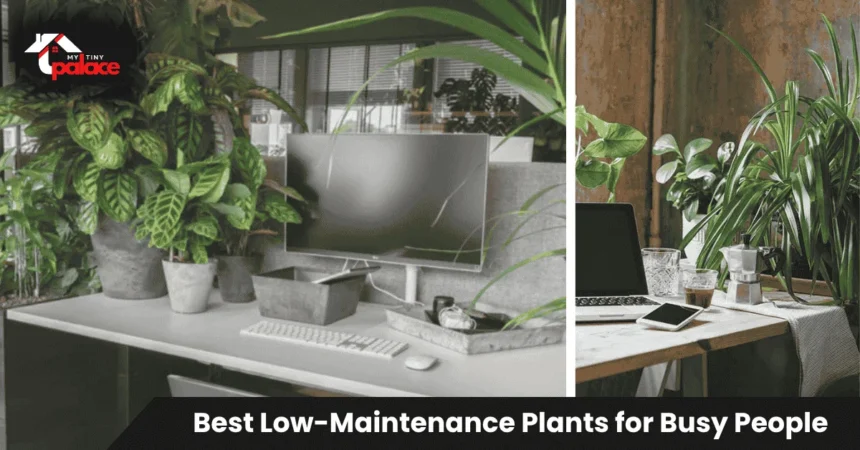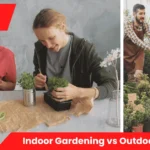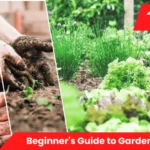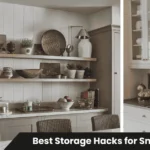Quick summary
Busy schedules don’t mean you have to skip indoor plants. This guide introduces you to low-maintenance houseplants that thrive on minimal watering and light, plus simple care routines that fit any lifestyle. Start with one forgiving plant and watch your space transform.
- Quick summary
- Best Low-Maintenance Plants for Busy People
- Why low-maintenance plants matter for busy lives
- Types of low-maintenance plants (what to expect)
- How to choose the right plant for your space and schedule
- Simple care routines that actually work (realistic for busy people)
- Costs, time, and tools—what you’ll actually spend
- Pros and cons—who should consider these plants
- Quick starter plant picks
- Quick summary and next steps
Best Low-Maintenance Plants for Busy People
When you’re working long hours, traveling frequently, or juggling family obligations, the last thing you need is a plant that demands daily attention. Low-maintenance plants are designed to handle neglect, irregular watering, and various light conditions without withering. “Low-maintenance” means most can survive 2–4 weeks without water, tolerate low light, need repotting only once or twice a year, and rarely attract pests. These plants are perfect for busy professionals, forgetful plant parents, and anyone who wants greenery without the stress.
Why low-maintenance plants matter for busy lives
Indoor plants do more than decorate. They improve air quality, reduce stress, and add life to a room. But only if they actually survive. When you pick a plant that matches your schedule—not the other way around—you win on every front. A thriving plant boosts your mood and feels rewarding. A neglected one creates guilt and clutter.
Low-maintenance plants solve this. They’re forgiving when you forget to water during a hectic work week. They don’t demand Sunday afternoon care routines. A single healthy plant on your desk or nightstand improves focus and sleep quality without asking for much in return. That’s the real benefit: joy without stress.
If you’re new to caring for plants, check out our Beginner’s Guide to Gardening at Home to learn foundational care skills and build confidence before trying more demanding varieties.
Types of low-maintenance plants (what to expect)
Before you shop, know what you’re getting. Succulents and cacti store water in their leaves, so they need watering only once a month or less. They’re the most forgiving category. Hardy foliage plants like snake plants and ZZ plants tolerate low light and irregular watering—perfect for offices or dim corners. Trailing plants like pothos work almost anywhere and propagate easily if you ever want to share cuttings. Air plants need no soil at all, just periodic misting. Low-light tropicals such as cast-iron plants survive in spaces with minimal natural light.
Each category has different strengths. Succulents look sculptural and modern. Foliage plants grow tall and bold. Trailing plants soften shelves and corners. Air plants are conversation starters. Choose based on your space and aesthetic, not just hardiness.
Whether you’re growing indoors or planning an outdoor garden, understanding your environment is key. Learn more about the differences in our guide on Indoor Gardening vs Outdoor Gardening to help you decide which growing method works best for your lifestyle and space.
How to choose the right plant for your space and schedule
Start with three questions. First, how much light does your space get? If your room has one small window or you’re working from a dim corner, pick a low-light plant like ZZ or snake plant. If you have a bright window with indirect sun, you can expand to pothos, spider plants, or even some succulents. Second, how often will you realistically water? If you travel weekly, choose plants that need watering once a month—ZZ, succulent, or cast iron plant. If you’re home and can water biweekly, lively options like pothos or spider plant work well. Third, do you have pets? Some plants are toxic to cats and dogs. Stick with spider plant, cast iron plant, or Boston fern if you share your home with animals.
A simple rule: low light plus monthly watering equals ZZ or snake plant. Bright indirect light plus weekly attention equals pothos or spider plant. No commitment plus occasional misting equals an air plant. Match these patterns to your life, and you’ll succeed.
Simple care routines that actually work (realistic for busy people)
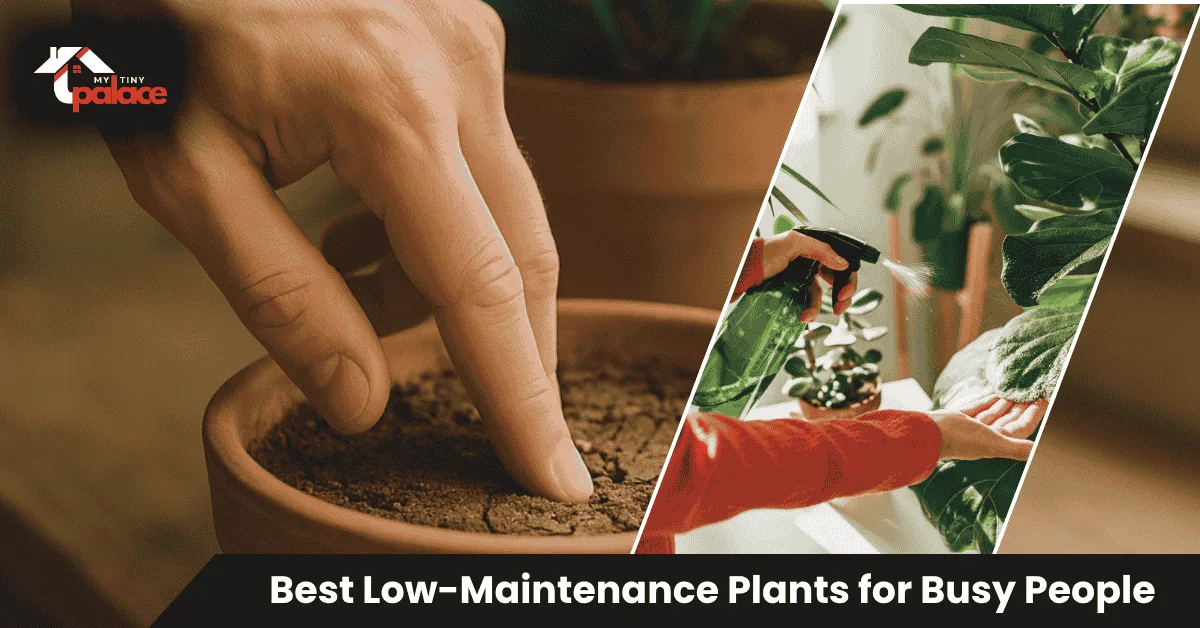
The secret to keeping plants alive isn’t complexity—it’s consistency. Most busy people succeed with a simple monthly routine: water deeply, rotate the plant a quarter turn, and wipe leaves if dusty. That’s it. Set a phone reminder for the first of each month, then water until water drains from the pot’s bottom. The pot’s drainage hole is your best friend; it prevents root rot.
Between waterings, check the soil once a week by sticking your finger an inch into the soil. If it’s dry, water. If it’s still moist, wait. This one-finger test prevents overwatering, the number-one plant killer. Use a pot with a drainage hole, never a decorative pot without one. Soil should be well-draining—repot into fresh potting mix once a year if the plant looks cramped or growth slows.
For succulents and cacti, water even less—every 4–6 weeks during the growing season, almost not at all in winter. For foliage plants, water when the soil is dry an inch down. For pothos and trailing plants, water when the top two inches feel dry. This sounds complicated, but after one watering cycle, it becomes automatic.
Quick weekly/biweekly/monthly checklist
- Weekly: Check the soil with your finger. Note if the plant looks droopy or the leaves are yellowing.
- Biweekly (if watering on this schedule): Water until drainage appears. Feel proud of yourself.
- Monthly: Deep water, rotate the pot, wipe leaves with a soft cloth, and scan for pests or brown spots.
Fast fixes for common problems
Yellow leaves: Usually means overwatering or poor drainage. Check the soil—if it’s soggy, repot into fresh dry soil and reduce watering frequency. If drainage is fine, it might be age; the lower leaves yellow naturally.
Droopy, wilting plant: This one actually wants water. Water thoroughly, then set up a more frequent watering schedule. Check that the soil drains well; soggy soil with wilting leaves signals root rot, which needs repotting ASAP.
Brown leaf tips: Often caused by low humidity or mineral buildup in tap water. Use filtered or distilled water, or let tap water sit overnight before using. Mist the leaves occasionally, or place the pot on a pebble tray with water.
Costs, time, and tools—what you’ll actually spend
A basic starter setup costs $30–$50: one small houseplant ($10–$25), a pot with drainage ($10–$15), and potting soil ($5–$10). Growing tools are optional. Most busy people succeed with just a watering can and their finger for soil testing. A moisture meter ($5–$10) and plant mister ($5) are nice additions, but not necessary. Monthly maintenance takes 10–15 minutes once a month, mostly just watering and looking.
| Item | Typical Cost | Time Commitment |
|---|---|---|
| Small houseplant | $10–$25 | Initial setup only |
| Pot with drainage | $10–$15 | One-time purchase |
| Potting soil bag | $5–$10 | Lasts 2–3 repottings |
| Watering can | $8–$15 | One-time purchase |
| Moisture meter (optional) | $5–$10 | Makes testing easier |
| Plant mister (optional) | $5–$8 | Useful for humidity |
| Monthly routine | — | 10–15 minutes |
Pros and cons—who should consider these plants
Pros: Low-maintenance plants are forgiving, slow-growing (so less frequent pruning), inexpensive to start, and available at most garden centers or online. They’re perfect for renters because they’re portable and low-commitment. They rarely need special equipment or expertise.
Cons: They grow slower than fussy plants, so you’ll wait longer for a large statement piece. Some people find them less interesting visually—succulents and snake plants have simple shapes. Slow growth means fewer propagation opportunities if you like sharing plants with friends.
These plants suit busy professionals, frequent travelers, office workers, forgetful plant parents, and renters. They’re also great for anyone recovering from plant-killing guilt—one success builds confidence.
Quick starter plant picks
Snake Plant (Sansevieria) — Water monthly, tolerates low light, grows upright and architectural. It’s nearly impossible to kill. Pro: survives months without water. Con: grows slowly, so you’re patience is rewarded. Best for: offices, corners, forgetful owners.
ZZ Plant (Zamioculcas zamiifolia) — Water once a month or less, handles low to bright light, glossy green leaflets on tall stems. It looks polished without effort. Pro: survives on neglect and low light. Con: can look a bit plain compared to other foliage. Best for: desks, dim hallways, busy professionals. Pet note: mildly toxic; keep away from cats and dogs.
Pothos (Golden Pothos) — Water weekly to biweekly, thrives in any light, trails beautifully from a shelf. It’s one of the most flexible houseplants. Pro: propagates easily if you want to multiply it. Con: can get leggy if the light is very low. Best for: hanging baskets, shelves, and beginners. Pet note: toxic to cats and dogs.
Spider Plant (Chlorophytum comosum) — Water biweekly, tolerates most light, produces long trailing shoots with babies. It’s cheerful and productive. Pro: pet-safe and fun to watch grow. Con: not as trendy-looking as succulents. Best for: hanging planters, kids’ rooms, pet-friendly homes.
Succulent (e.g., Echeveria) — Water every 4–6 weeks, bright indirect light, thick fleshy leaves in geometric rosettes. It’s modern and minimal. Pro: striking visual, drought-hardy, fits small spaces. Con: rots easily if overwatered or in low light. Best for: sunny windowsills, desks, modern decor.
Cast Iron Plant (Aspidistra elatior) — Water biweekly, survives extremely low light, large green leaves on short stems. The name says it all. Pro: one of the most tolerant plants ever. Con: slow-growing, minimal visual drama. Best for: dark corners, offices without windows, rentals.
Quick summary and next steps
You don’t need a green thumb to grow plants. You need a plant that matches your life. Start by picking one low-maintenance plant that fits your light level and watering schedule. Place it somewhere you’ll see it daily—a desk, bedside table, or shelf. Set a phone reminder for the first of each month to water. That single habit keeps most low-maintenance plants thriving for years.
Your next move: look at your space right now. Which corner feels empty? Which room needs a boost? Pick one spot, measure it, and choose one plant from the list above that fits. Buy it this week. Water it once a month. You’ve got this.






